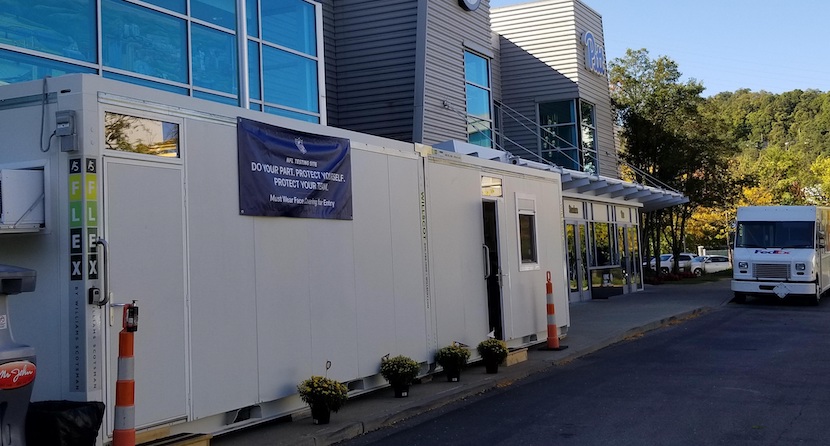
Over the past two years of COVID-19, temporary buildings, including mobile offices, helped industries across the U.S. and Canada quickly respond to changing pandemic needs. From the healthcare industry to professional sports, mobile offices provided the temporary space needed to keep workers safe and operations running.
Now headed into year three of the pandemic, mobile offices have remained a key part of COVID-19 response and recovery. Below are a few ways mobile offices have supported recovery efforts.
How Mobile Offices Supported COVID-19 Recovery
Onsite Testing Centers
Due to their durable and versatile design, mobile offices have been used throughout the pandemic as a suitable alternative to testing tents. With mobile offices, hospitals quickly added extra treatment space, municipalities created relocatable public testing centers and businesses added onsite employee temperature checkpoints.
Social Distance Space
Similarly, mobile offices also provided socially-distanced workspace during the pandemic which helped keep businesses and schools open. By using mobile offices for extra social distance workspace, employees were able to safely spread out or protect themselves in individual cubicles and workstations.
Vaccination Centers
When the COVID-19 vaccines were rolled out, mobile offices were a key method for a flexible response. Mobile office vaccination sites evolved as pandemic needs have changed, expanding to meet demands and relocating to a new areas those demands shifted.
Research Facilities
Mobile offices were used for COVID-19 research and vaccine development. Specifically, some pharmaceutical companies relied on mobile office space for lab and testing space as their teams worked to meet increasing vaccine production needs.
Throughout the pandemic, mobile offices provided an immediate solution for big and small industries, helping keep businesses open and workers safe.
